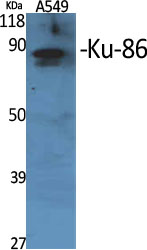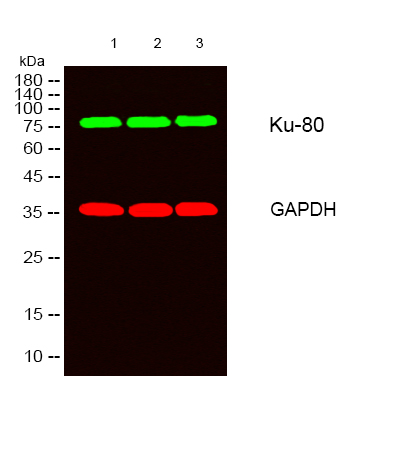POSTN rabbit-FC recombinant protein
- Catalog No.:YD3133
- Reactivity:Human;
- Purity:
- >90% as determined by SDS-PAGE
- Protein Name:
- Periostin (PN) (Osteoblast-specific factor 2) (OSF-2)
- Sequence:
- Amino acid:22-93,with rabbit FC tag.
- Formulation:
- Phosphate-buffered solution
- Storage Stability:
- -15°C to -25°C/1 year(Avoid freeze / thaw cycles)
- Background:
- This gene encodes a secreted extracellular matrix protein that functions in tissue development and regeneration, including wound healing, and ventricular remodeling following myocardial infarction. The encoded protein binds to integrins to support adhesion and migration of epithelial cells. This protein plays a role in cancer stem cell maintenance and metastasis. Mice lacking this gene exhibit cardiac valve disease, and skeletal and dental defects. Alternative splicing results in multiple transcript variants encoding different isoforms. [provided by RefSeq, Sep 2015],
- Function:
- function:Binds to heparin. Induces cell attachment and spreading and plays a role in cell adhesion. May play a role in extracellular matrix mineralization.,PTM:Gamma-carboxyglutamate residues are formed by vitamin K dependent carboxylation. These residues are essential for the binding of calcium.,similarity:Contains 1 EMI domain.,similarity:Contains 4 FAS1 domains.,tissue specificity:Widely expressed with highest levels in aorta, stomach, lower gastrointestinal tract, placenta, uterus and breast. Up-regulated in epithelial ovarian tumors. Not expressed in normal ovaries. Also highly expressed at the tumor periphery of lung carcinoma tissue but not within the tumor. Overexpressed in breast cancers.,
- Subcellular Location:
- Golgi apparatus . Secreted . Secreted, extracellular space, extracellular matrix . Colocalizes with BMP1 in the Golgi. .
- Expression:
- Widely expressed with highest levels in aorta, stomach, lower gastrointestinal tract, placenta, uterus, thyroid tissue and breast. Up-regulated in epithelial ovarian tumors. Not expressed in normal ovaries. Also highly expressed at the tumor periphery of lung carcinoma tissue but not within the tumor. Overexpressed in breast cancers.

